Americans in France
Americans in France consists of immigrants and expatriates from the United States as well as French people of American ancestry. Immigration to France from the United States date back to the 19th century and according to the American embassy in Paris, as of 2015, there are about 150,000 to 200,000 American citizens residing in France.
| Total population | |
|---|---|
| c. 150,000-200,000[1] | |
| Regions with significant populations | |
| Paris | |
| Languages | |
| Religion | |
| |
| Related ethnic groups | |
| Americans in the United Kingdom |
History
19th Century
Unofficial figures indicate that up to 50,000 free blacks emigrated to Paris from Louisiana in the decades after Napoleon sold the territory to the United States in 1803.[2]
Paris was the art capital of the world in the nineteenth century and has attracted painters, sculptors, and architects from around the world including the United States.[3] In the decades following the American Civil War, hundreds of Americans joined the throngs headed to Paris. American artists, who formed the largest contingent of foreign painters and sculptors in Paris, were only one segment of the capital's extensive American colony, which also included writers, businessmen, diplomats, and others in more-or-less permanent residence.
Many American artists stayed together, and enclaves of them developed on the Left Bank, along the rue Notre-Dame-des-Champs and near the École des Beaux-Arts and the Académie Julian's headquarters. Although some lived in Paris for long periods—even the rest of their lives—most insisted on identifying themselves as American.
20th to 21st Century
World War I and the Aftermath
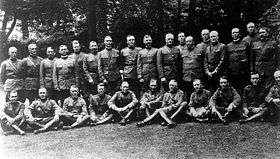
During the United States campaigns in World War I the American Expeditionary Forces fought in France alongside British and French allied forces in the last year of the war, against Imperial German forces. The first 14,000 U.S. infantry troops landed in France at the port of Saint Nazaire and by May 1918 over one million U.S. troops were stationed in France, half of them being on the front lines.[4]
In the aftermath of World War I, when about 200,000 were brought over to fight, Paris began to have an African-American community. Ninety per cent of these soldiers were from the American South.[2] France was viewed by many African Americans as a welcome change after incidents of racism in the United States. Beginning in the 1920s, U.S. intellectuals, painters, writers, and tourists were drawn to French art, literature, philosophy, theatre, cinema, fashion, wines, and cuisine. It was during this time that jazz was introduced to the French and black culture was born in Paris.
American expatriates in Paris, 1918–1940
With the defeat and dismantling of Austria at the end of World War I, Paris replaced Vienna as the cultural capital of Europe, if not of the world. Many foreigners settled in Paris during this period, some briefly and some long-term, some exiles and some voluntary, because of Paris's tolerance for unorthodox sexuality, politics, and art. The movement built on itself, as the more intellectuals and artists moved to Paris, the more attraction it had for others. Among the Americans living in Paris during this period are Paul Bowles, Aaron Copland, Ernest Hemingway, Henry Miller, Ezra Pound, Gertrude Stein, and Alice B. Toklas.
World War II
When France officially declared war on Germany in September 1939, as a response to the Third Reich's invasion of Poland, an estimated 30,000 Americans lived in or near Paris.[5] Although that declaration was followed by roughly nine-months of what often was called the "phony war" or "drôle de guerre," the inevitability of coming conflict led most of those expatriates to leave France while they could.
In June 1940, the inevitable occurred with massive German attacks and after scarcely three weeks of battle, Nazi troops marched uncontested through the gates of Paris and some 5,000 Americans still were in the French capital. For various reasons, such as family ties and professional obligations, they had chosen to remain in Paris. At that moment, the United States was not at war, however, and not militarily allied with anyone. It was still a neutral nation. German occupying forces were legally obligated to treat U.S. citizens better than French nationals even though many were bi-nationals with French passports as well as American ones.
Americans who stayed in the capital endured most of the shortages and hardships of their French neighbors but to some extent for nearly a year and a half they were not imprisoned by German occupying authorities. However, their lives were not easy and often tragic, in particular for African-Americans and Jewish Americans who were frequently singled out by the Nazis for harsher than normal treatment. Because the United States still remained neutral, the German occupying forces at first allowed long-standing institutions in the French capital such as the American hospital, the American library, the American church, the American Chamber of Commerce as well as various others of a commercial or charitable nature to remain open.
When the United States entered the war, it led to a clamp down on U.S. citizens in German-occupied northern France. Many were rounded up and sent to internment camps. Those who were not still were obligated to report regularly to German occupying authorities or French police. Internments applied initially only to men although, in September, 1942, German authorities began to intern American women as well.
Aftermath of the War to Present Day
Many American students have been flocking to France for further education following the aftermath of the Second World War. In 2007-2008, more than 17,000 Americans studied in France as undergraduate and graduate students, a number which represented a 46 percent increase since 2001.[6] For majority of Americans, France is the country that first comes to mind when retiring abroad. Among the reasons were the scenery and the climate as well as France being a cultural leader of the world.[7]
Religion
The American Church in Paris is the first American church established outside the United States. It started in 1814, when American Protestants started worshipping together in different homes around Paris. The first sanctuary was built in 1857, on rue de Berri.[8] The American Church continues to minister to many Anglophone Protestants in Paris, both American and other English speaking communities, with multicultural programming, and a congregation of over nearly 40 nations and 35 Christian denominations.
Similarly, American Cathedral in Paris has served the American community since the 1830s, when services were organized in the garden pavilion of the Hôtel Matignon. A parish was formally established in 1859 and the first church building consecrated in 1864 on Rue Bayard.
Education
Every year, some 17,000 American students travel to Paris, France to spend a semester or an academic year abroad, hundreds more participate in the Teaching Assistant Program in France, and still others go to France to work or to study independently of an American university program.
The American School of Paris, founded in 1946 shortly after the end of World War II, is the oldest American school in Europe.[9] The school provides an American model of education to students from nearly 50 nations, 50% being American. Instruction is in English, and all students study French, either as a first or second language.[10]
The American Graduate School in Paris is a not-for-profit organization and it is recognized in France by the Ministry of Higher Education as a private institution of Higher Learning, and offers programs that are accredited in the United States.
There is also the American School of Grenoble.
Notable people
 | 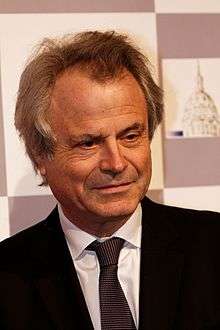 |  |  |  |  |
 | 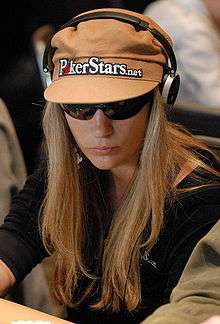 |  |  Joséphine Baker |  | |
 |  |  |  | .jpg) |  |
 |  | 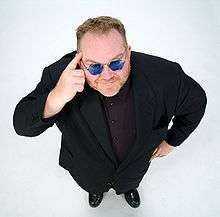 |  | 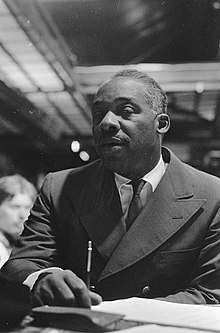 | _crop.jpg) |
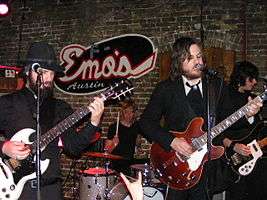 |  Eugene Jacques Bullard |  |  |  | |
.jpg) | 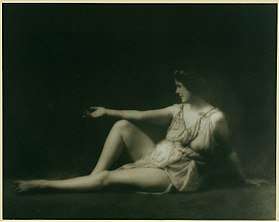 | 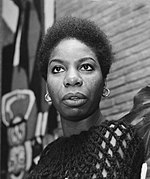 | 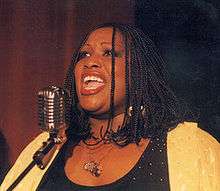 |  | |
 |  |  |  |
References
- "Americans in France". Embassy of the United States, Paris. United States Department of State. Archived from the original on April 18, 2015. Retrieved April 26, 2015.
Today, although no official figure is available it is estimated that over 150,000 American citizens reside in France, making France one of the top 10 destinations for American expatriates.
- "Heilbrunn Timeline of Art History - Americans in Paris, 1860–1900", The Metropolitan Museum of Art
- Pershing, My Experiences in the World War (1931)
- "Americans in Wartime Paris", Bonjour Paris
- "Study in France - Why France? Archived 2012-06-16 at the Wayback Machine", Campus France
- "Paris Unraveled", Study Abroad Guide, January 2011
- Friendly Adventures, by Joseph Wilson Cochran, published 1931
- "France, Paris: American School of Paris". Office of Overseas Schools, U.S. Department of State. Washington, DC. November 21, 2007. Retrieved April 17, 2008.
- "American School of Paris: Profile". france.english-schools.org. Retrieved April 17, 2008.
